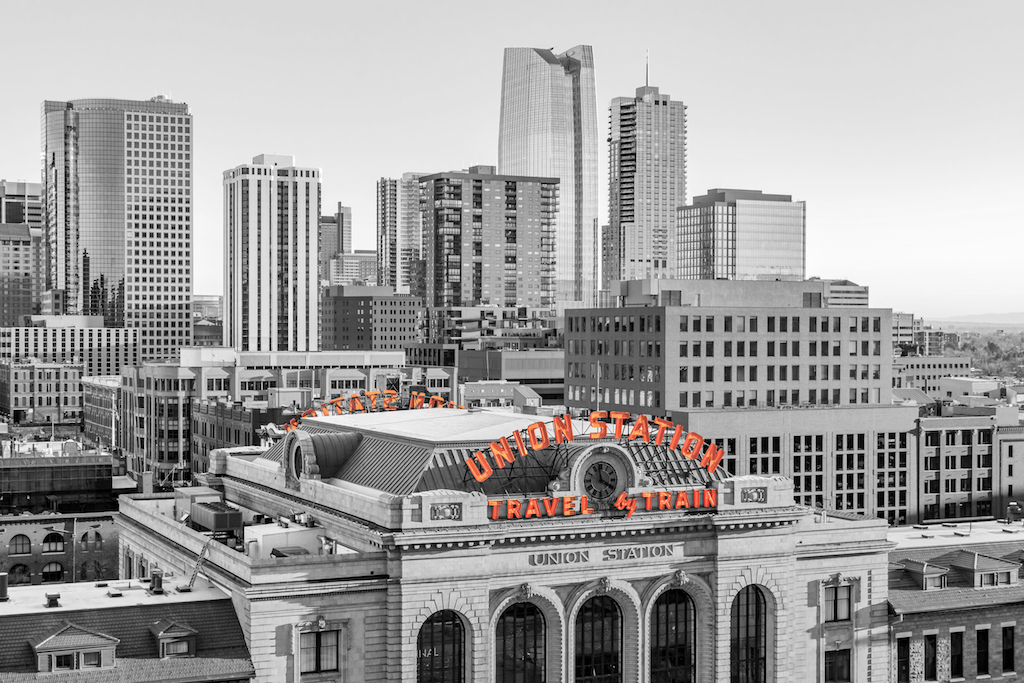The Downtown Denver Partnership released today its 2020 State of Downtown Denver Report. The report, funded in part by the Downtown Denver Business Improvement District, is the most comprehensive statistical look at the stories and statistics behind an economically healthy downtown Denver. The Report highlights decades of building downtown Denver with intentionality necessary for resiliency following times of crisis and includes an addendum that outlines the economic impact of COVID-19.
The report highlights the impact of place-based economic development efforts to meet the vision outlined in the 2007 Downtown Area Plan, the long-term strategy for downtown.
“This year’s State of Downtown report tells the story of a downtown that – for decades – has worked with grit, determination, and unmatched collaboration to build strength and resiliency,” said Tami Door, president and CEO of the Downtown Denver Partnership, “We are reminded that we have never experienced highs without lows, and that economic prosperity has never been born without challenges. The State of Downtown Denver report helps us to better understand the foundation we’ve built and to identify further opportunities for a thriving downtown.”
Highlights from this year’s State of Downtown Denver include:
Employment and Talent:
Downtown Denver added 6,563 new jobs last year, resulting in record-high total employment of 145,077. This 4.7% job growth was fueled by a host of new company locations and major expansions–13 announcements in total. Top-flight talent continues to call the Denver region home, with a fast-growing workforce that now tops 1.7 million people. The region also produces great talent each year, thanks to the 11 colleges and universities. In 2019, Denver experienced a record low unemployment of 2.3% – more than an entire percentage point lower than the national rate. Today, we face historic-high unemployment rates, with 11.3% unemployment in Colorado.
Office Market:
Driven by demand for space from existing companies expanding (e.g. 2U, KPMG, Salesforce) and new companies moving to the market (e.g. Checkr) the downtown office market remained strong with stable average lease rates ($35.32 per square foot) and vacancy rates (10.3%). A positive 400,000 square feet was absorbed in 2019, bringing the total absorption in 2018 and 2019 to nearly 2 million square feet; however, net absorption in 2020 is projected to be negative for the first time since 2016 due to several large buildings coming on-line. This trend will likely be amplified due to the impact of the COVID-19 pandemic. The office investment market reflected the strong performance, as existing players doubled down on their investments and new ones entered the market for a total of $1.4B in office investments.
Development & Investment:
Over the last decade, downtown Denver has experienced a historic development cycle, adding over 4 million square feet of office, over 10,000 residential units, and over 3,500 hotel rooms. Investors continue to see the downtown Denver opportunity, with 26 development projects under construction or planned – adding up to roughly 1.3 million square feet of office, 1,500 residential units, and 1,000 hotel rooms in the pipeline. Continued investment helps to retain jobs and fuel our economy.
Mobility
Since 2013, the share of employees choosing to ride their bikes to work has doubled. Currently, 9.2% of downtown commuters bike to work. And the City of Denver continues to make investments that support a multimodal transportation system in and around downtown Denver; in 2019, the City began a rapid expansion of the bike network that will add 125 miles of new bicycle infrastructure to Downtown and nearby neighborhoods to make it safer and more convenient for commuters and residents to get around by bike.
Residents
The most recent census estimates put the City of Denver at 727,211 total residents, a net increase of almost 11,000 over the previous year. Of this 11,000, about 60% came from net migration and 40% from natural increase. This continues a decade long trend of sustained population.
Retail and Restaurants
Retail sales were 8.2 percent higher in 2019 compared to the prior year, the largest annual increase since 2014. Retail direct average lease rates were at $29.63 per square foot in Q1 2020, up 8.1 percent year over year and were significantly higher than the Metro Denver average of $18.26. Vacancy rates were also up slightly, rising 0.8 percentage points year-over-year in Q1 2020 to 3.5 percent. Downtown vacancy rates are still a full percentage point less than the Metro Denver vacancy rate of 4.5 percent. Much like their peers across the city, country, and worldwide, Downtown Denver’s restaurants and retailers will face significant challenges resulting from the COVID-19 crisis that is not reflected in these numbers. However, the success of 2019 and recent years provide hope and a roadmap for a successful long term recovery of the retail sector.
Hospitality and Tourism
While downtown Denver tourism enjoyed one of its most successful years ever in 2019, the industry has been disproportionately hard-hit by the COVID-19 pandemic. The closure of restaurants, museums, and attractions, coupled with mass cancellation of concerts, festivals, and events, means that nearly all of Denver’s demand drivers have been silenced. This has been paralleled in the meetings and conventions segment, which normally accounts for nearly $800 million in annual visitor spending, and has similarly ground to a halt. This thriving aspect of downtown has been brought to a sudden stop as we look at opportunities to safely and creatively bring this activity back to our center city.
To view the complete 2020 State of Downtown Denver Report, please click here.









